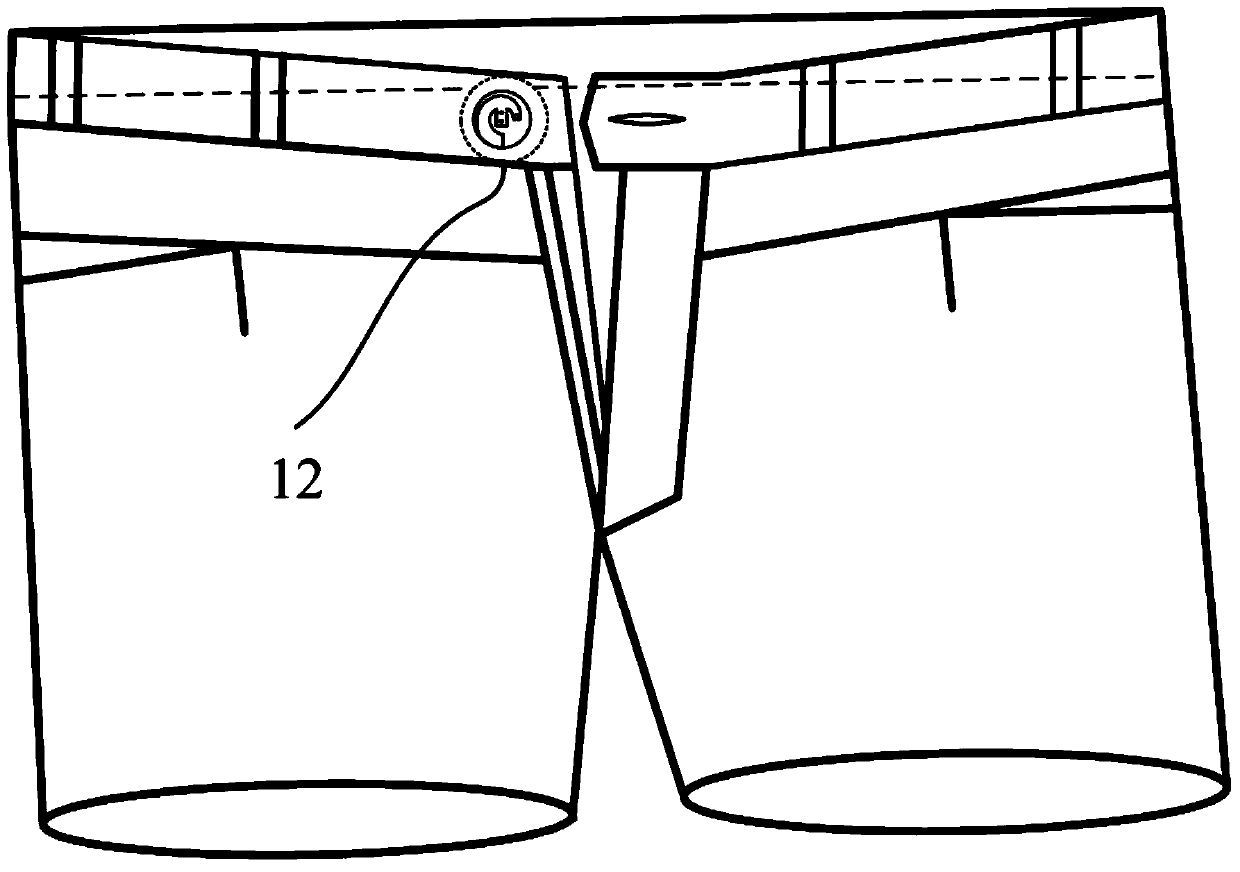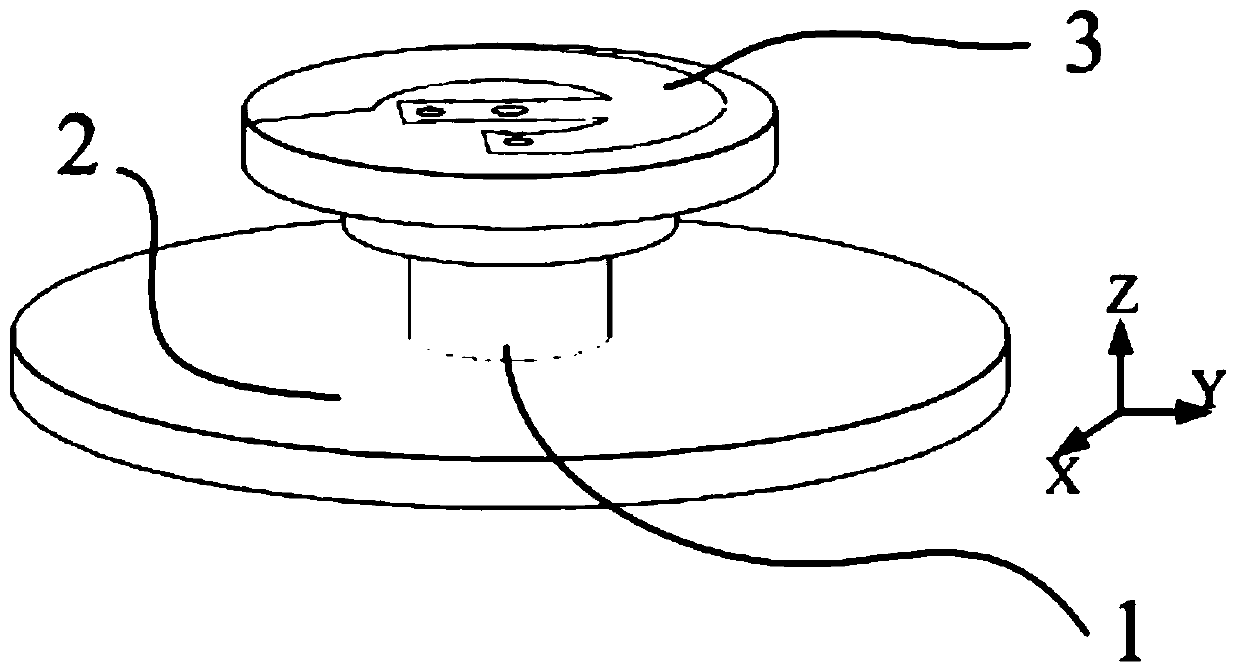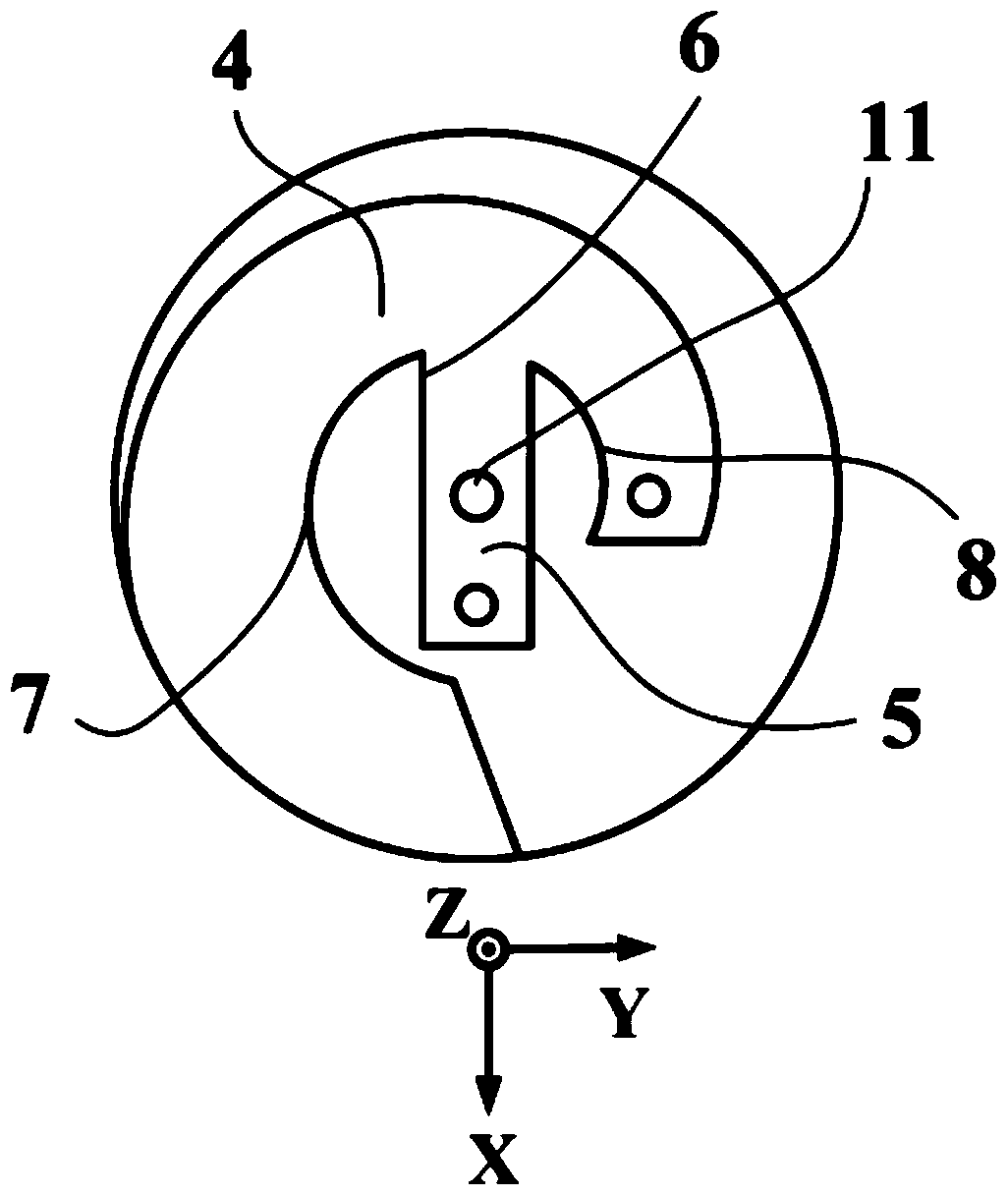A dual-frequency button antenna that can be integrated into clothing for body area network communication
A button and antenna technology, which is applied to antenna equipment with additional functions, antenna supports/installation devices, radiating element structures, etc., and can solve problems such as being easily affected by the human environment, absorption rate limitations, and radiation pattern changes. , to reduce the impact of human body fading, reduce manufacturing difficulty, and reduce the effect of coupling
- Summary
- Abstract
- Description
- Claims
- Application Information
AI Technical Summary
Problems solved by technology
Method used
Image
Examples
Embodiment 1
[0039] In this embodiment, a dual-frequency button antenna that is applied to body area network communication and can be integrated into clothing, such as figure 1 As shown, it is specifically integrated on the upper edge of the zipper of denim shorts, which serves as the original button function, and also serves as an antenna module for body area network wireless communication, integrating the dual-frequency button antenna 12 with the clothing button, which can reduce the It is difficult to manufacture human body fabric antennas by using cloth, which increases the feasibility of integrating wearable antennas with clothing. In addition, the present invention can also be integrated on the chest of the shirt, and can also be integrated with the jacket with buttons without affecting the original appearance and function of the clothes.
[0040] like figure 2 As shown, the present invention is composed of a feeding part 1, a metal support base 2 and a radiator 3, and the overall ...
Embodiment 2
[0048] like Figure 8 Compared with the specific embodiment 1, the specific embodiment 2 of the button antenna of the present invention has made the following changes, the diameter of the floor under the I-shaped metal support base becomes larger, and an asymmetric structure is adopted, and the feed part is connected to the metal support base The point is offset to the right by a certain distance from the center of the lower floor. In addition, the radiator adopts Rogers 4003 plate (RO4003) with more stable performance. The overall structure of the radiator remains unchanged, but the specific parameters need to be fine-tuned and optimized.
[0049] The comparison of the radiation pattern between the human body model and free space is shown in Fig. 9(a), Fig. 9(b), Fig. 9(c) and Fig. 9(d). It can be seen that in the actual working environment of human tissue, the role of the human body makes The radiation pattern of the button antenna changes, and the absorption of human tissu...
Embodiment 3
[0051] The Rogers plate is used, and the offset asymmetric structure is also adopted on the I-shaped hard metal support base. The height of the entire button antenna is reduced, and the profile is lower. At the same time, the feeding structure is changed for the convenience of testing. At the same time, in order to reduce the SAR value of the human body’s absorption rate of electromagnetic wave energy in actual conditions, the radius of the floor under the support seat has been increased. Figure 10 . refer to Figure 11 , The simulation test results of the specific embodiment 3 show that the reflection coefficients are very consistent, which verifies the feasibility of the button antenna. Referring to Table 1, when the specific embodiment 3 is working on the human body model, the maximum specific absorption rate SAR value obtained by simulation meets the standards of the United States and the European Union at two resonance frequencies, which verifies the practicability of t...
PUM
 Login to View More
Login to View More Abstract
Description
Claims
Application Information
 Login to View More
Login to View More - R&D
- Intellectual Property
- Life Sciences
- Materials
- Tech Scout
- Unparalleled Data Quality
- Higher Quality Content
- 60% Fewer Hallucinations
Browse by: Latest US Patents, China's latest patents, Technical Efficacy Thesaurus, Application Domain, Technology Topic, Popular Technical Reports.
© 2025 PatSnap. All rights reserved.Legal|Privacy policy|Modern Slavery Act Transparency Statement|Sitemap|About US| Contact US: help@patsnap.com



